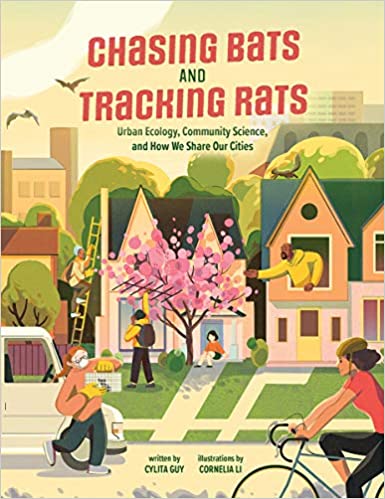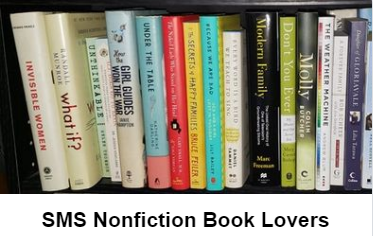A book review of Chasing Bats and Tracking Rats: Urban Ecology, Community Science and How We Share Our Cities by Cylita Guy
Stars: ***
Annick Press (2021)
Urban Ecology
108 pages
Disclosure: I received a copy of this book from the publisher in exchange for an honest review. This post contains affiliate links.
Summary: Gripping narrative non-fiction with STEM and social justice themes that proves cities can be surprisingly wild places—and why understanding urban nature matters.
What can city bees tell us about climate change? How are we changing coyote behavior? And what the heck is a science bike? Featuring the work of a diverse group of eleven scientists—herself included!—Dr. Cylita Guy shows how studying urban wildlife can help us make cities around the world healthier for all of their inhabitants. In the process, Guy reveals how social injustices like racism can affect not only how scientists study city wildlife, but also where urban critters are likelier to thrive.
Sidebars include intriguing animal facts and the often-wacky tools used by urban ecologists, from a ratmobile to a bug vacuum. Cornelia Li’s engaging illustrations bring the scientists’ fieldwork adventures to life, while urban ecology challenges encourage readers to look for signs of wildlife in their own neighborhoods.
Chasing Bats and Tracking Rats
This book will answer some basic urban ecology questions such as:
- why wildlife rely on city green spaces
- how do animals in cities affect human health
- what are cities a good place to study the impact of climate change on bees
- what happens when humans and wildlife in cities don’t get along
- how are humans changing animal behavior in cities
- how does the pollution we create affect city animals
- what happens when citizen science doesn’t tell us the whole story
- why are greener cities better for people
Each chapter poses one of those questions and then seeks out to answer it. Backed up by illustrations and sidebars of information, children will get to know how city ecology works. The book is listed as ages 9-12 but I’d recommend 12+. I found it a bit hard to follow and I can’t imagine my 10 year old paying attention.
I love all Annick Press books, especially the nonfiction. Their nonfiction is always very informative. If city ecology is you’re thing, this is a good starter book for any age.
Buy Chasing Bats and Tracking Rats from Amazon.com and help support the blog.
Find Chasing Bats and Tracking Rats from Goodreads.









